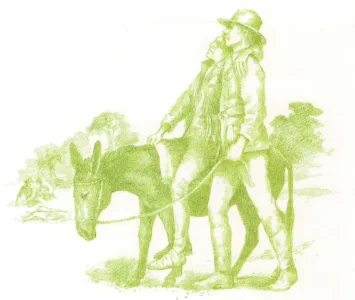Anzac Day
April 25
Simpson and his donkey
The air crackled with the sound of rifle and machine gun fire. The earth
shuddered from the explosions of cannon shells. Through this storm of
death, thousands of soldiers streamed up a long stretch of beach toward
distant hills.
It was April 25, 1915—early in World War I. The soldiers were men of
the Australian and New Zealand Army Corps, called Anzacs for short. They
were invading Gallipoli, a long neck of land that sticks out from the
coast of Turkey.
One of the Anzacs was John Simpson Kirkpatrick, known to his friends as
\”Simpson.” Simpson’s duty was to find wounded soldiers and bring them
to safety.
One day, shortly after the landing, Simpson saw a donkey wandering
about. It was one of a number of donkeys used to carry water. This one
had lost its driver. Simpson realized the donkey could be of great help
in carrying wounded men. He took the animal with him.
Each day, Simpson led the donkey, which he named \”Duffy,” out to search
for the wounded. The man and animal, risking their lives to save others,
became a familiar sight. But on May 19, Simpson’s luck ran out. He was
killed. Duffy came back alone.
The story of Simpson and his donkey became a famous tale of World War I.
After

the war, a statue of Simpson and Duffy was put up in Melbourne,
Australia, where Simpson had lived.
April 25, the day the Anzacs landed at Gallipoli, became known as Anzac
Day. It is a national holiday in Australia and New Zealand. There are
sunrise services at war memorials and military parades. This day honors
the memory of those who died at Gallipoli and in all battles since then.
And on Anzac Day, a wreath of flowers is placed at the statue of Simpson
and his donkey.

